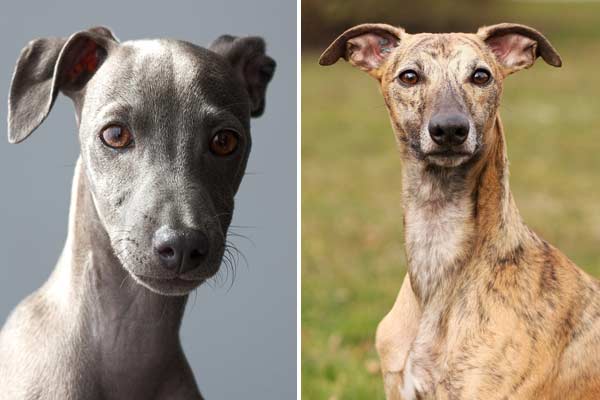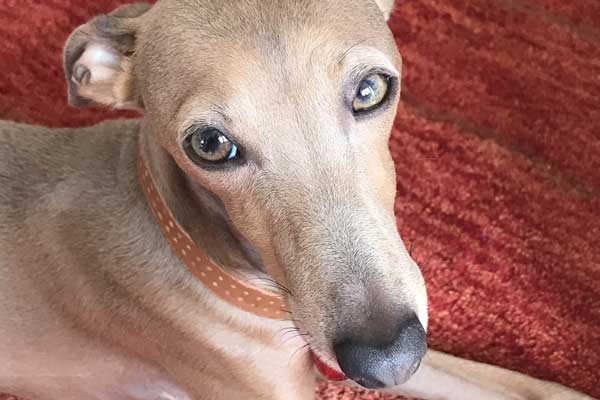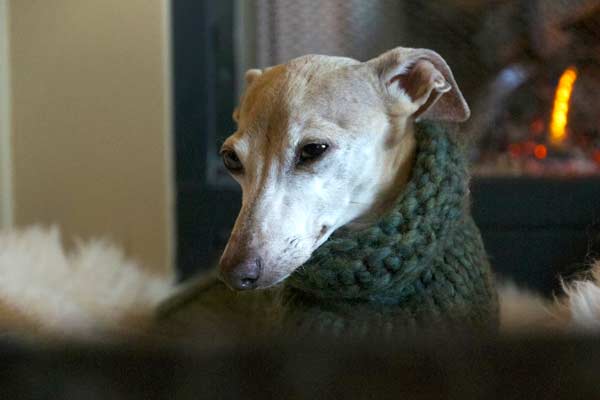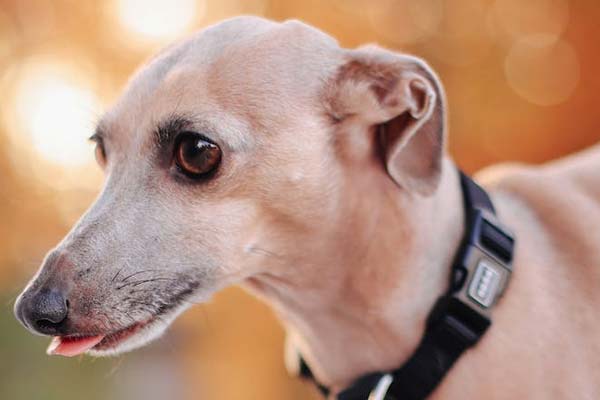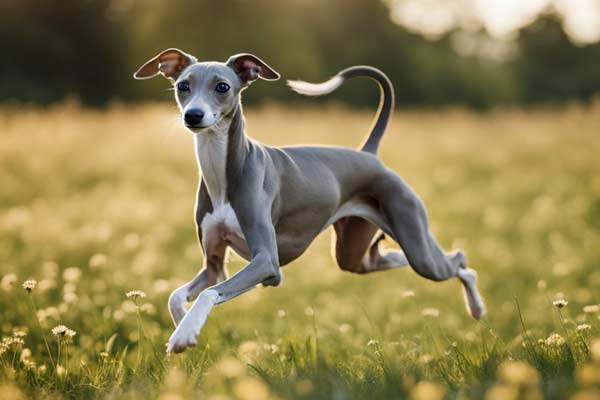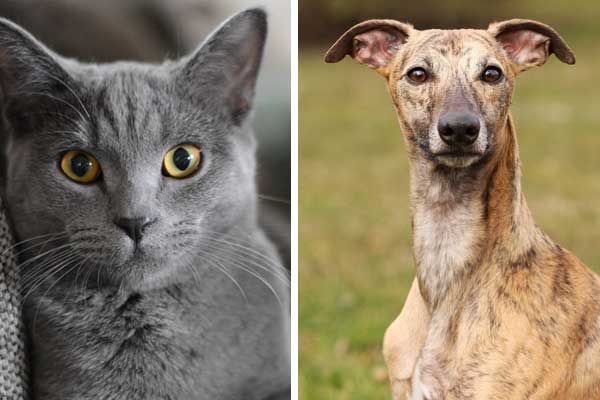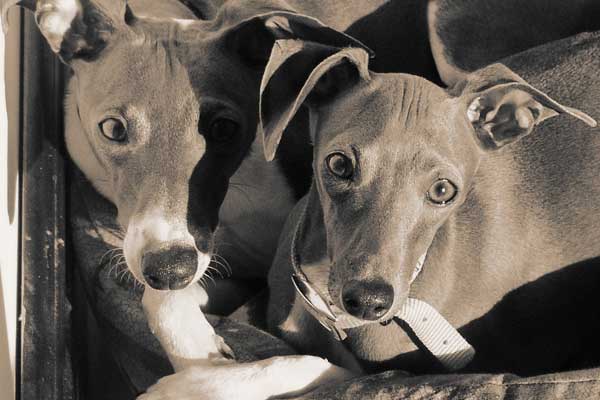Whippet vs Italian Greyhound: Battle of the Sighthounds
Are you searching for a new addition to your family but need help deciding between the Whippet and Italian Greyhound? If so, this article is just what you need.
We will explore the differences between these breeds in size, temperament, and energy levels.
You will learn about their history and physical characteristics, such as fur type and coloration, and we’ll compare the temperaments of each breed to help you choose which dog would best fit your lifestyle.
Finally, we’ll discuss potential common health issues among breeds and tips for finding the right pup! So if you’re ready to decide whether a Whippet or Italian Greyhound should join your family, let’s dive in!
Understanding the Differences Between Whippet and Italian Greyhound Dogs
Whippet and Italian Greyhounds have a lot of similarities, but there are also some significant differences between them. Here’s a guide to help you out!
A Brief History of Whippets and Italian Greyhounds: Their Origin and Evolution
Whippets Origin
The Whippet was developed in England during the 19th century by breeding Greyhounds with other breeds, such as terriers and Collies, to produce a smaller version of the Greyhound—the Whippet!
This new breed was ideally suited for hunting rabbits and other small game while being cheaper to maintain than their larger cousins.
Whippets are a sighthound dog breed that can reach top speeds of up to 35 mph – making them one of the fastest dog breeds in the world!
Development Over Time
Throughout the 19th century, the popularity of this new breed continued to grow. As more and more people began to appreciate its loyal temperament, intelligence, athleticism, and versatility, it quickly gained recognition as an excellent family pet.
Whippet became popular in dog shows across Europe due to its elegant appearance and graceful gait. In 1888 The American Kennel Club recognized the Whippet breed.
In recent years, the popularity of the Whippet has grown significantly in North America due to its reputation as an easy-to-train dog with minimal health problems. It has become an ideal choice for busy families.
Uncovering the History of Italian Greyhounds
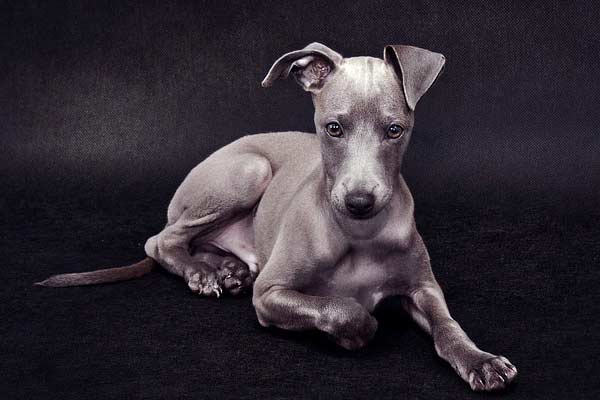
Italian Greyhounds Origins
The exact origins of the Italian Greyhound are unknown, but there is evidence that suggests that these dogs may have been present as far back as 2,000 years ago in Egypt and Greece.
The first written record of an Italian Greyhound dates back to the first century AD when Roman Emperor Nero was said to have owned one. The Italian Greyhound was bred solely for companionship and affection.
The Italian Greyhound is a truly remarkable dog with an impressive maximum running speed of up to 25 miles per hour.
Development Over Time
In 1886, the American Kennel Club officially recognized them as a breed, and since then, they have become increasingly more popular throughout North America as companion pets.
In terms of physical appearance, little has changed over time but still known for its slender figure, short coat, and gentle temperament – qualities that have remained unchanged since its origins centuries ago.
An Overview of Italian Greyhound Physical Characteristics
Fur Type and Coloration
The fur type of an Italian Greyhound is short and delicate, with little shedding. They are born with a single coat color, but as they mature, the coat may lighten or darken depending on exposure to sunlight. Standard colors include black, white, blue, red, grey, cream, fawn, and brindle. Some dogs may also have sable or piebald markings.
Body Shape and Size
Italian Greyhounds have long legs and slim bodies that give them a graceful gait. Their slim build makes them well-suited for activities like running or agility training. They typically weigh between 7-14 pounds and stand between 13-15 inches in height at the shoulder.
However, due to their delicate bones, Italian Greyhounds should only be expected to perform strenuous activities such as jumping or running long distances with proper conditioning first.
Personality Traits
Italian Greyhounds make wonderful companions due to their loving nature and intelligence. They tend to bond closely with just one person but still show affection towards other family members and strangers they meet in public settings.
Despite their small size, they need regular exercise and daily walks to stay happy and healthy.
An Overview of the Whippet’s Physical Characteristics
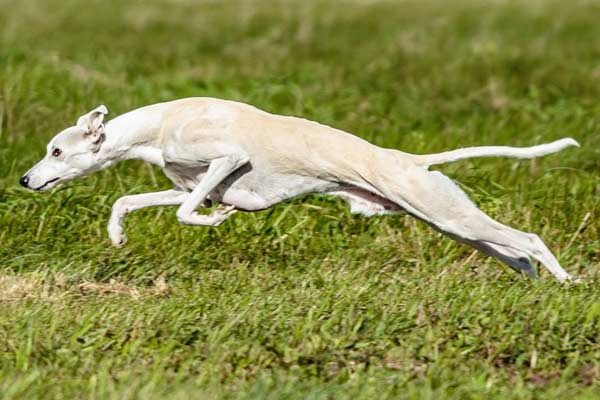
Fur Type and Coloration
The Whippet is a medium-sized dog with a short coat. Their coats come in many colors: black, white, brindle, blue, cream, and red.
The most common fur type for the breed is straight and smooth. Some Whippets may also have patches of solid or ticking markings on their fur.
Body Shape
The Whippet has a slender build with long legs and a narrow chest. They have a deep chest which gives them great endurance when running.
They have well-developed muscles that make them great athletes and agile jumpers. They typically weigh between 25-45 pounds (11-20 kg) and stand between 18-22 inches (46-56 cm) at the shoulder.
Other Characteristics
They also have some distinctive features such as hazel or dark eyes ranging from bright gold to almost black, ears set high on the head and an overall graceful appearance that makes them look elegant even when running at full speed!
Exploring the Temperament Differences between Whippets and Italian Greyhounds
Whippet Temperament
Whippets are known for being independent dogs who love having their own space. While they enjoy playing with their family, they also enjoy lounging alone.
This independence makes them an ideal pet for someone who travels often or works long hours, as they don’t require constant attention.
Whippets tend to be quite protective of their owners and will alert them if any strangers come too close. They also make excellent watchdogs because they bark to alert you when something is amiss.
Italian Greyhound Temperament
Italian greyhounds are known for being very affectionate animals who crave human interaction. They love cuddling up next to their owners and following them around the house.
They have plenty of energy that needs exercise daily! Italian greyhounds can become anxious if left alone for too long, so they need someone to spend plenty of time with them throughout the day.
Whippets and Italian Greyhounds Exercise Needs
Whippet Exercise Needs
Whippets need regular exercise. At least an hour of daily routine is recommended for these energetic dogs.
They enjoy sprinting or running at full speed around a large open field or park but always keep them on a leash to prevent them from running after small animals or vehicles.
Whippets also love playing fetch with a ball or Frisbee; this is an excellent way to give them the mental stimulation they crave while also getting in some good physical activity.
Italian Greyhound Exercise Needs
Italian greyhounds are more laid back than whippets and don’t require quite as much exercise, though they still need regular physical activity.
A good walk once or twice a day should be sufficient for these dogs, though if you have more playtime, it can help keep your pup mentally stimulated and happy.
It’s important to note that due to their thin coats, Italian greyhounds may become cold quickly during colder months; try exercising them indoors if necessary.
Whippet Training
Whippets are intelligent dogs who often pick up commands quickly with positive reinforcement training methods such as treats and praise.
Proper leash training is essential for whippets since their high energy levels can lead them to dangerous situations if not controlled.
Start by teaching your pup basic obedience commands like sit, stay, come, etc., then move on to more complex commands such as “no bark” or “heel” when walking on a leash in public spaces.
Italian Greyhound Training
Like whippets, positive reinforcement training methods work best with Italian greyhounds when teaching basic obedience commands.
You might find that clicker training works best for Italian greyhounds since it allows them to learn commands without fear or intimidation using sound cues instead of harsh verbal ones.
Common Health Issues in Whippets and Italian Greyhounds
Hip Dysplasia in Whippets & Italian Greyhounds
Hip dysplasia is a common health issue for whippets and Italian greyhounds.
Pet owners must pay special attention to their dog’s hips during regular checkups with their vet.
Proper nutrition is essential for preventing hip dysplasia; ensure your dog gets enough calcium and other vitamins and minerals to maintain healthy joints.
Heart Disease in Whippets & Italian Greyhounds
Another common issue among whippets and Italian greyhounds is heart disease. It can range from heart murmurs (abnormal sounds made by the heart) to more severe conditions like congestive heart failure (CHF).
Regular exercise will help keep your pet’s cardiovascular system strong; however, it’s essential to do what is necessary with these breeds since they are prone to tiring quickly due to their delicate respiratory systems.
Knowing your dog’s average pulse rate is critical; if you notice any changes or your pup seems lazy or out of breath after exercise, bring them to the vet immediately.
Epilepsy in Whippets & Italian Greyhounds
Epilepsy can affect whippets and Italian greyhounds at any age—but it tends to be more common in older dogs.
Epilepsy Signs include seizure activity (collapsing or twitching), loss of consciousness, drooling or foaming at the mouth, disorientation after a seizure ends, pacing behaviors before a seizure begins, etc.
Some supplements are available on the market explicitly targeting canine epilepsy; talk with your vet about what might be best for your pup!
Comparing the Grooming Needs of Whippets and Italian Greyhounds
Coat Types
The coats of whippets and Italian Greyhounds are short, sleek, and glossy. They require very little maintenance, usually just a regular brushing to help remove dead hair and keep the coat looking healthy.
The Italian Greyhound may need more frequent grooming than the Whippet due to its finer coat texture.
They shed seasonally, so you’ll need to brush them more frequently during those times.
Bathing Requirements
Both whippets and Italian Greyhounds should only bathe when necessary because too much bathing can strip away the natural oils in their skin and fur, leaving them vulnerable to dryness and irritation.
They should bathe once every six weeks unless they get into something smelly. When it’s time for a bath, use a gentle shampoo specifically formulated for dogs—human shampoos can dry out their skin too much!
Nail Trimming & Teeth Brushing
Both breeds will likely need their nails trimmed regularly—every four to eight weeks—to prevent painful overgrowth or splitting of the nails; brush their teeth at least two or three times per week with a soft-bristled toothbrush designed for dogs (flavored toothpaste!).
Comparing the Lifespans of Whippet and Italian Greyhound Dogs
Whippet Lifespan
Whippet’s average lifespan is 12 to 14 years. To help your Whippet live a long life, it’s essential to stay up-to-date on vaccinations, maintain regular vet visits, and keep an active lifestyle with plenty of exercises.
Italian Greyhound Lifespan
Italian Greyhound’s average lifespan is 13 to 15 years. However, Italian Greyhounds have sensitive stomachs, so it’s essential to feed them a quality diet that won’t cause any digestive issues or allergies.
Comparing the Costs of Whippet and Italian Greyhound Puppy Ownership
Puppy Price & Adoption Fees
The price of Whippet and Italian Greyhound puppies varies greatly depending on the breeder and litter size.
Prices for Whippets range from $1,500 – $2,500, while prices for Italian Greyhounds are lower at around $1,400 – $2,000.
If you’re looking to save money, many rescue organizations specializing in these breeds offer adoption fees ranging from $100 to $400.
Health Care Expenses
It’s important to factor in the cost of regular veterinary visits when budgeting for pup ownership.
It includes annual exams, vaccinations, heartworm testing (if applicable), flea/tick prevention products, dental care (including teeth cleaning), nail trimming, and spaying/neutering if needed.
Due to their greater size, the cost of these services will be higher for larger breeds like the Whippet than for smaller ones like the Italian Greyhound.
Food & Supplies
Proper nutrition is essential for all dogs, regardless of breed or size, so include food costs in your budgeting.
Regarding supplies, both breeds require similar items such as beds/blankets/toys/leashes & collars, etc., though larger breeds may have higher costs due to their larger sizes.
Whippet and Italian Greyhound Which One Is the Best for You
Whippets and Italian Greyhounds make lovely family pets, with critical differences that you should consider before adopting either breed.
In terms of appearance and temperament, Whippets tend to be larger and more outgoing, while Italian Greyhounds are smaller and prefer quieter environments with fewer people around them.
Additionally, each breed has unique health concerns you need to consider before adoption. With this information in mind, we hope you’ll find it easier to decide which breed is right for you!
